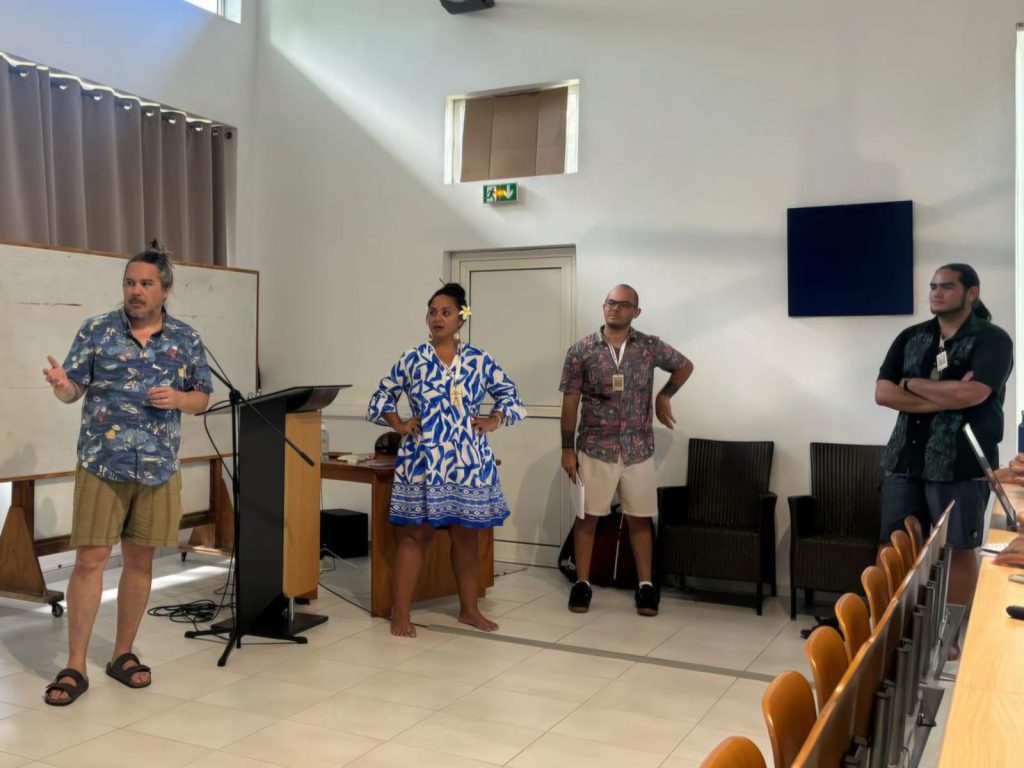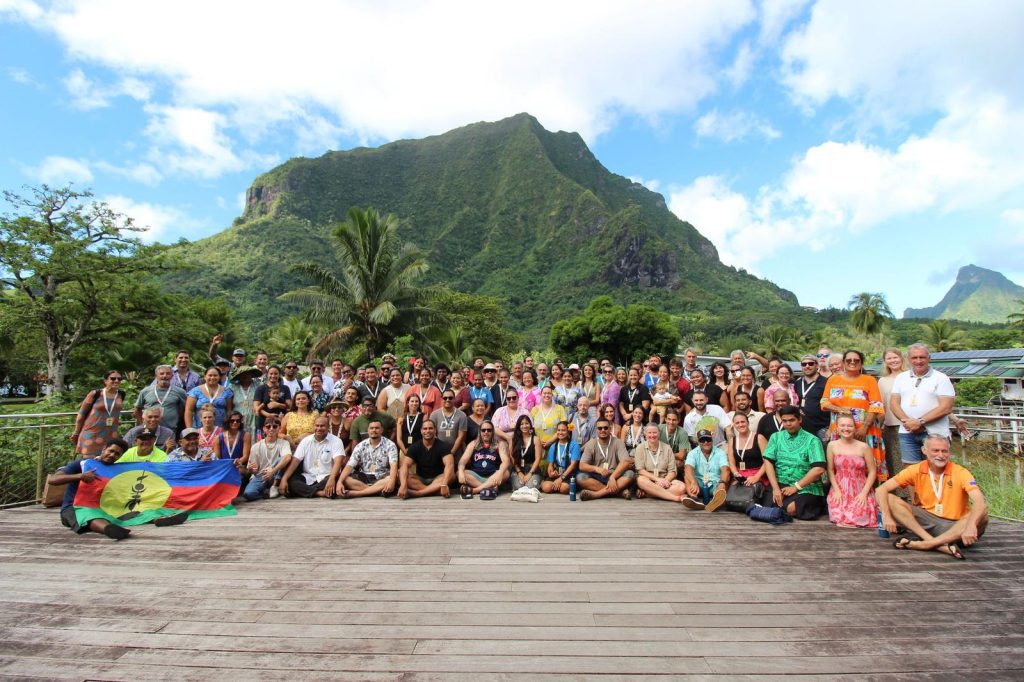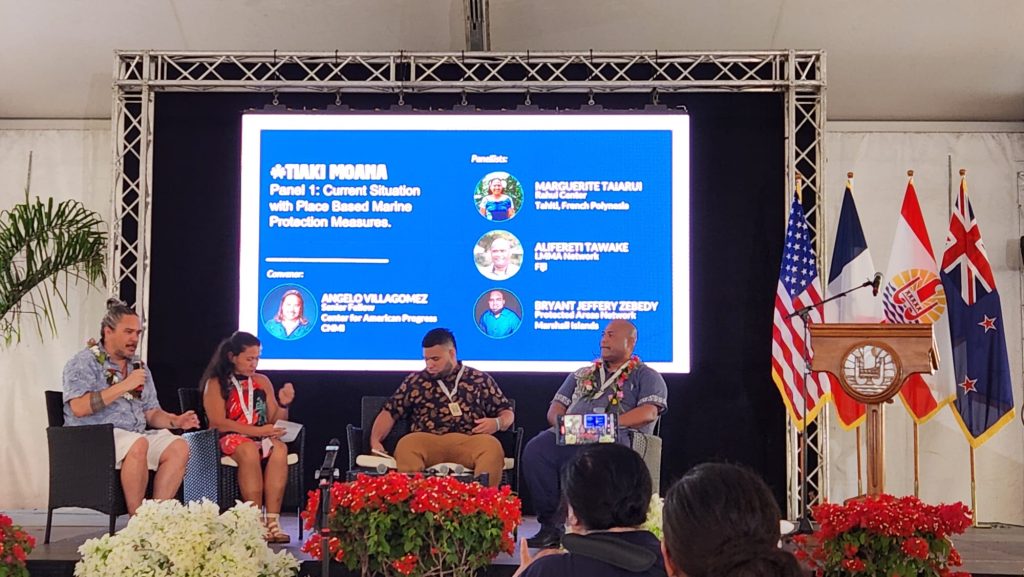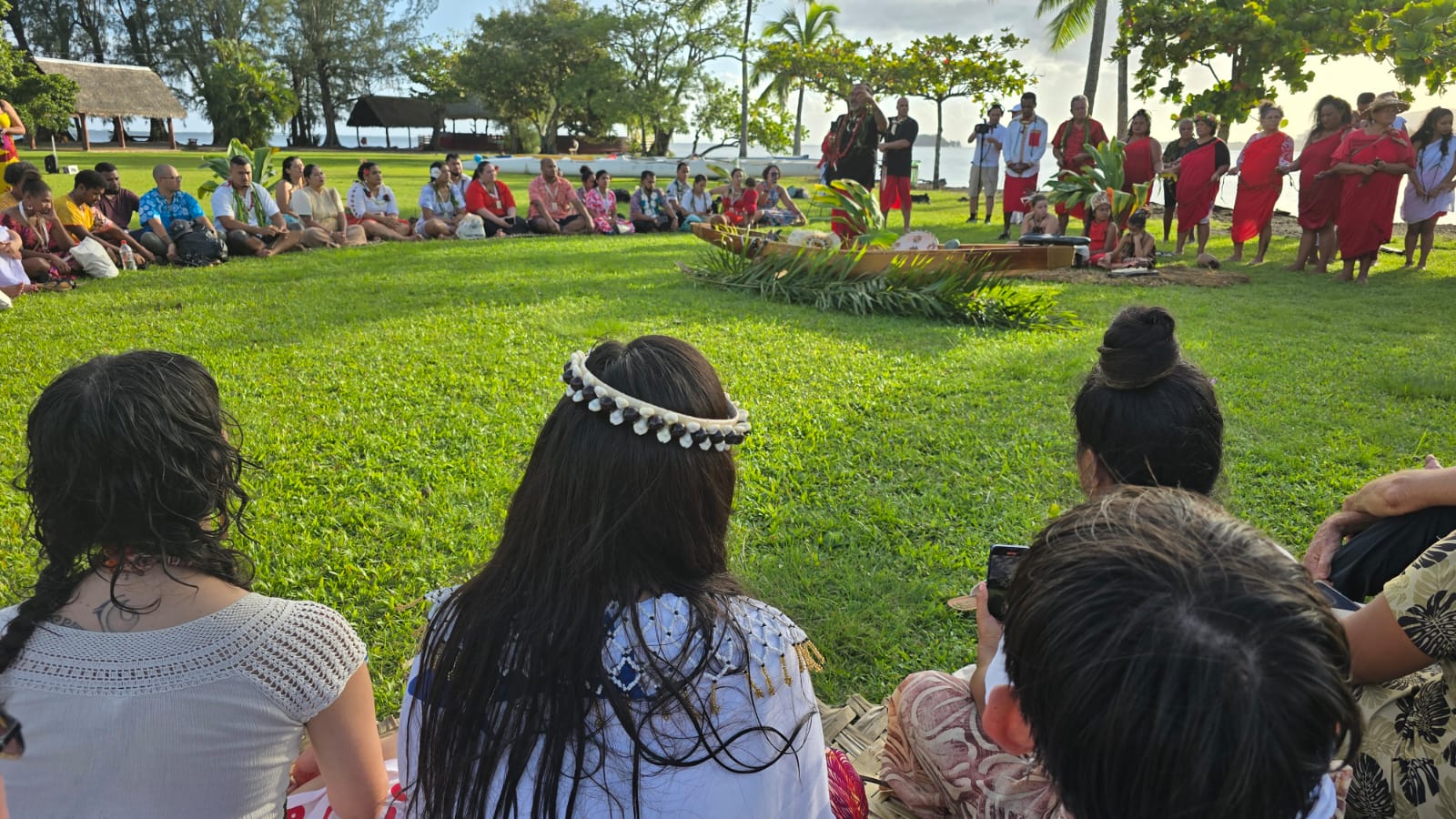The Tiaki Moana (English translation: Guardians of the ocean) conference in Tahiti, French Polynesia on understanding marine Other Effective Area-based Conservation Measures (OECMs) for the Pacific was both a spiritual and professional experience for me, one that left me with a renewed sense of purpose and a deeper understanding of the intricate relationships that underpin effective conservation measures in the Pacific islands. I sometimes find myself living in two worlds – I’m that Chamorro kid from the island who grew up fishing; but I’m also a senior fellow at a Washington, DC think tank. I was invited to bring both of those identities to the conference, but this essay is written from the perspective of the DC guy, and it’s addressed to people outside the Pacific islands to help you better understand our ways. I wrote the bulk of this essay from my hotel room in Tahiti waiting for my flight back to Washington, DC.
As I reflect on the discussions and insights shared last week, I am reminded of the importance of trust in the identification of OECMs in the Pacific. Trust, built on relationships, respect, and reciprocity, is the cornerstone of our efforts as guardians of the ocean. These are the human dimensions of working in conservation in the Pacific – what I like to call the who, how, and what.

The innovation and sustainability themed sessions of the conference, led by Alan Brochard of New Caledonia and myself, attracted a wealth of technical expertise, and it was clear that the other four themes had variations on the outcomes I share in this essay. But it was also clear some participants came from communities that were not yet ready for OECMs, highlighting the need for tailored approaches and capacity-building efforts, but also the willingness to accept no for an answer. We must be patient and present, working to build the necessary foundations for effective conservation measures in these areas.
The conference emphasized that everything must always come back to making OECMs Our effective conservation measures; and that they must be deeply rooted in our Pacific ways of knowing, being, and valuing. This approach is not just about scientific data and technical expertise; it is about honoring the wisdom and traditions of Pacific peoples, who have been stewards of these lands and waters for generations. Our conservation strategies must reflect this holistic understanding, integrating traditional knowledge and values with modern practices to create solutions that are both effective and culturally resonant.

One of the most inspiring aspects of the conference was the spirit of continued sharing and learning. Several Young Pacific Leaders proposed the creation of a Tiaki Moana network, and imagined a platform for connecting citizen scientists and fostering collaborative learning. This network would serve as a hub for exchanging ideas, sharing experiences, and building a community of practice dedicated to marine conservation. The enthusiasm and commitment of these young leaders were palpable, and their vision for a connected and empowered community is something we must strive to realize.
A recurring theme throughout the conference was the need for greater involvement with communities from the beginning through every stage of OECM recognition. It is not enough to have a few experts making decisions; we need to engage a broader spectrum of stakeholders, including local communities, traditional leaders, and government representatives. This inclusive approach ensures that the conservation measures we implement are not only scientifically sound but also socially and culturally appropriate.
Adaptability was another key point of discussion. OECM identification must be flexible and responsive to the unique contexts of different islands and cultures. What works on one island may not be suitable for another, and our strategies must be tailored to reflect these differences. This adaptability extends to the mainstreaming of OECMs into existing efforts and structures, such as the Secretariat of the Pacific Regional Environment Programme (SPREP) and the Micronesia Challenge. By integrating OECMs into these established frameworks, we can leverage their resources and expertise to enhance our conservation efforts.
However, mainstreaming OECMs is not without its challenges. Funding is a critical issue that needs to be addressed. Without adequate financial support, our efforts to integrate OECMs into regional and local systems will fail, just as unfunded marine protected areas have failed. We must advocate for increased funding and develop innovative financing mechanisms to sustain our conservation initiatives.
In addition to funding, we need to develop tools that are specifically designed for the Pacific context. Operation manuals, guidelines, and best practices tailored to our unique environmental and cultural landscapes will be invaluable in helping communities understand and implement OECMs effectively. These tools will provide the practical support needed to translate our conservation goals into tangible actions.

Engaging with government and traditional leaders is another crucial aspect of our strategy. We need to develop approaches that are appropriate to the context, using stories, case studies, and data to demonstrate the effectiveness of OECMs. By showcasing successful examples and providing evidence of their impact, we can build support and buy-in from key stakeholders. This engagement must be ongoing and dynamic, adapting to the evolving needs and priorities of the communities we serve.
Sitting back at my desk in Washington, DC and putting the final touches on this essay, I find I have a renewed sense of hope and determination. The challenges we face are significant, but the passion and commitment of the Tiaki Moana give me confidence that we can overcome them. By fostering trust, embracing Pacific ways of knowing, and promoting continued sharing and learning, we can create a future where our marine environments are protected and cherished for generations to come.
Tiaki Moana was a powerful reminder of the importance of relationships in conservation; at the end of the day, conservation is people. It underscored the need for inclusive, adaptable, and well-funded strategies that honor the wisdom of the Pacific. As we move forward, let us carry these lessons with us, working together to safeguard our oceans and ensure a sustainable future for all.
This essay is based on my notes from the “synthesis sessions” of the “unconference” where we collated all of the lessons from more than six hours of discussions over two days during the Innovative and Sustainable Approaches theme discussions. This theme was meant to discuss the integration of technological advancements with local knowledge, the adoption of circular economic models, and the pursuit of legal personhood for marine entities to foster a more respectful and sustainable relationship with nature. I don’t think we did any of that, and instead focused on the topics submitted by the participants. The other four themes were Defining and Implementing marine OECMs, Indigenous and Local Knowledge, Existing Marine Management Tools, and Governance and Future Generations. Thanks to Blue Cradle for the invitation to participate. Visit Tiaki Moana for more information on the conference, including photos and daily wrap-ups.
